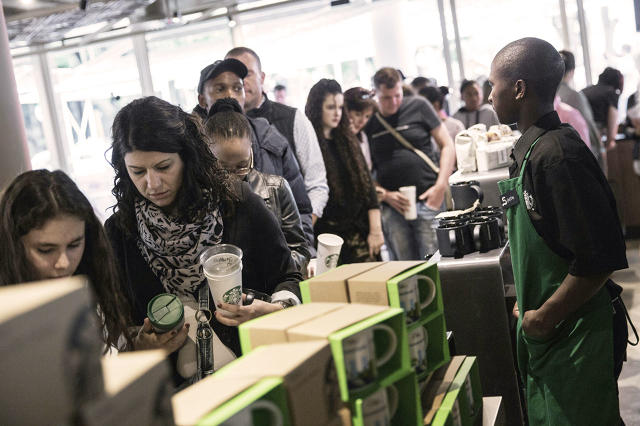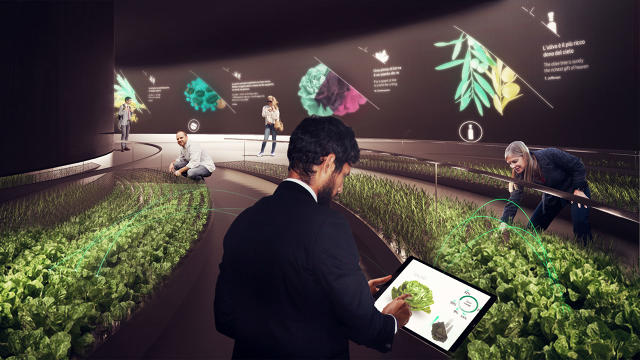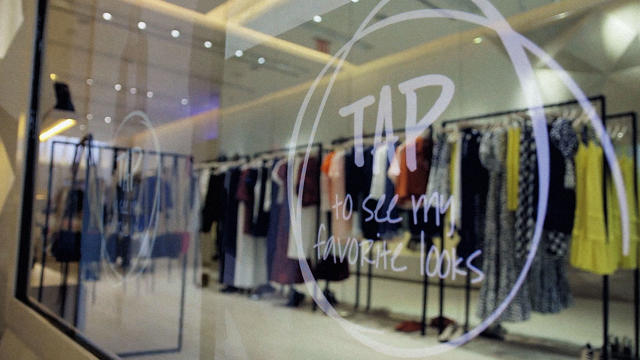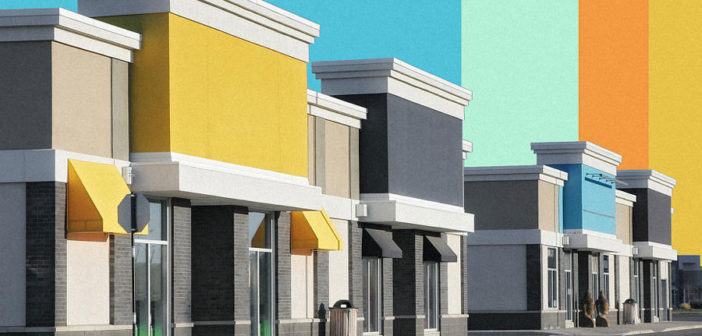These are the four big retail trends coming in 2017.
Online shopping has now reached a decade of maturity. We all use services like Amazon Subscribe & Save—and we do so through our phones, following advertisements we see on Facebook.
Yet while the internet forever changed shopping, the physical retail environment lagged behind. That is until recently. In 2016, we saw some of the first hints of how traditional stores are about to change, too: an Amazon storethat lets you grab whatever you like without paying for it, e-commerce companies open physical locations, and high fashion taking inspiration from your local chain drugstore self-checkout. And over the next few years, the brick-and-mortar buying experience will change even more dramatically.
We talked to experts in retail, ranging from the analyst to the scientist to the marketer, about the big retail trends around the corner. Stores aren’t going anywhere any time soon. But they are about to look and feel a whole lot different from the way they did before. Here are the big retail trends to look out for in 2017 and beyond.

THE BIG-BOX STORE EVOLVES TO SURVIVE
Millennials are moving to cities, and they’re not buying cars. “We have an entire industry around suburban big-box grocery stores,” says Aidan Tracey, CEO at product branding collective sgsco. “Loading a case of water and diapers on your back and getting on the bus isn’t going to work.”
So what happens to suburban big-box stores now?
They might begin to look more like a warehouse with a tiny retail storefront that would be car- or Uber-pickup friendly, while the big-box store companies open more small satellites stores with less inventory.
“We had been operating for this idea that bigger is better, the superstore or supercenter. Now we’re seeing a shift away from that, brands closing their stores, reconsidering their footprint,” says Sidney Morgan-Petro, retail editor at the trend forecasting agency WGSN.
Macy’s, for instance, closed dozens of stores last year. Sears closed more than 150 locations. Morgan-Petro points to Target for being proactive, and introducing flexible format stores, which have a smaller footprint and more market-focused inventories. “They’re getting very, not to be punny, targeted to where they’re opening up,” Morgan-Petro continues. “A lot of them are college campus stores or urban campus stores.”
Rumors suggest that Amazon is considering the warehouse-storefront model, in which its faceless distribution centers could serve double duty as drive-through shops. It’s a retail practice that’s already been proven out abroad. “In the U.K., it’s been a thing for a while,” says Morgan-Petro. “Tesco has been doing it for a few years already. But yeah, sometimes when Amazon does something everyone is like, ‘Oh my god!’”

SERVICES BEAT GOODS
Not every type of retailer is going to be hurt by a shifting car and shopping culture. Experts agree that there are things that Uber can’t disrupt.
“At the highest level, you have more physical retail going into service,” says Sucharita Mulpuru, former Forrester retail analyst and chief retail strategist at the commerce festival Shoptalk. In other words, places like sporting goods stores, once offering the value proposition of a large inventory of tennis rackets, are now getting into ancillary services, like the restringing of said rackets. Retailers are using services to make their brick-and-mortar locations more valuable in the face of online shopping.
Even with Grubhub and Uber food delivery, quick service restaurants (like Starbucks and McDonald’s) are still slated to do well in the physical realm. And places where you can still get a service—like teeth whitening at your dentist, or blood pressure monitoring at CVS—are going to continue to bring people in for things that cannot be shipped by a two-day free delivery.
“Tutoring facilities are one of the fastest growing retail sectors out there,” says Mulpuru. It’s like a reversal of the 1950s. Doctors don’t make house calls—in fact, you drive to any service you want. But that cup of sugar you need from the store? That’s delivered. We go places for people, not things.

IT’S ABOUT CONVENIENCE . . . OR EXPERIENCE
In a world based upon extremes, failure can often be found in the middle. Nobody likes lukewarm coffee. They want it steaming hot or poured over ice. Experts agree that retail is evolving the same way.
“On the one hand, we will increasingly use digital services (ideally mobile apps) to purchase down-to-earth products—such as toilet paper, laundry soap, milk. I could imagine a kind of Amazon unlimited scheme that will constantly replenish our supply of toilet paper,” says designer and MIT professor Carlo Ratti. “On the other hand, I see a blossoming of experiential shopping. Think about choosing fresh food produce: We will always enjoy going to a physical store where we can touch, smell, etc. The store, in turn, can become increasingly focused on providing us with unique experiences.”
Ratti points to Eataly—a client of his—as proof of this trend. Eataly is a wonderland of Italian cuisine, with restaurants, butchers, pasta makers, and countless cured meats all under the same giant roof. It’s every bit as overwhelming to the senses as any theme park, and that’s entirely the point. For Eataly’s next trick, Ratti has been experimenting with allowing customers to grow their own food within the supermarket. Absurd and unscalable? Maybe. But it’s also an extreme experience that puts Whole Foods’s local produce to shame.
As Andy Adams, senior vice president of store development at Starbucks, explained to us, the company is rethinking its guiding design philosophy of building locally relevant stores. Whereas the old challenge was customizing a stock Starbucks store with hyper-local flourishes reflected in the art and materials of the buildings, now, the company is filtering local relevance through the lens of convenience and experience. It’s a process Adams calls “dialing in” their store vision.
“We’re in the middle of figuring out exactly what ‘dialing it in’ means—but it’s a range, from an express store that gets you a drip coffee and breakfast sandwich quickly on your way to your first meeting without being late, to a multi-hour visit, spending $30 on a siphon brewed coffee and maybe a Tom Dixon tray—the ability to dial it up, a place of convenience, or a place that is experiential.” Starbucks believes they can play both sides at the same time, and the company believes that is unique to Starbucks.
“Doing beats buying,” Morgan-Petro concurs, especially for the millennial consumer. In fact, she argues that now experience is so important that it’s reverberating back into the design of products themselves. “Instead of an apparel company thinking ‘how can we offer an experience?’ instead they’re creating goods that work with an experience.” You can see this play out in the rise of festival fashion—summer clothing marketed to the Coachella-goer—or in new products for travel.

PHYSICAL STORES GAIN WEBSITE TRANSPARENCY
Ever walk into a shop—tiny or supercenter—and find yourself looking for something in particular that you know should be there, only to learn it’s sold out, or was never carried in the first place? This is about to change, as stores are finally getting better about leveraging low-cost radio chips (RFID) to track the precise stock and location of goods in their stores, in real-time.
“Even with Moore’s law, the adoption of RFID tagging hasn’t really hit its inflection point yet. It’s gotta happen sometime in the net few years,” says Mulpuru. “It’s so essential for one of the biggest gaps: Retailers don’t know 100% of what’s in their store. They know what’s supposed to be in their store. Or if something sells. But that whole in-between process, they don’t know. RFID should solve that and does for some companies.”
Mulpuru points to the prices of RFID, now less than 10 cents per chip, and retailers like Macy’s and Kohl’s getting onboard in tagging every item sold with these chips, just like price tags. Uri Minkoff, CEO of the fashion brand Rebecca Minkoff, recently explained to us that upgrading to RFID didn’t just make Rebecca Minkoff’s store inventory clearer; it meant that employees could bring a whole box of RFID tags into a connected dressing room and scan the entire store inventory instantly.
For the shopper, RFID could enable apps to pinpoint its location in a store—imagine being lost inside a Target, pulling our your phone, and learning the snow shovels were right above the salt on aisle seven. And at the same time, RFID could enable more seamless buying experiences—as it likely does at Amazon Go stores—allowing you to take something off the shelf, and allowing all these radio frequencies to automatically pay for you.
And as Ratti argues, technologies like RFID being used higher up in the chain—at the production level—will allow an unprecedented level of tracking that will be mineable for consumer insights we’ve never had for products before. “In the future, we will be able to discover everything there is to know about the apple we are looking at,” he says. “The tree it grew on, the CO2 it produced, the chemical treatments it received, and its journey to the supermarket shelf.”
This article first appeared in www.fastcodesign.com
Seeking to build and grow your brand using the force of consumer insight, strategic foresight, creative disruption and technology prowess? Talk to us at +9714 3867728 or mail: info@groupisd.com or visit www.groupisd.com




